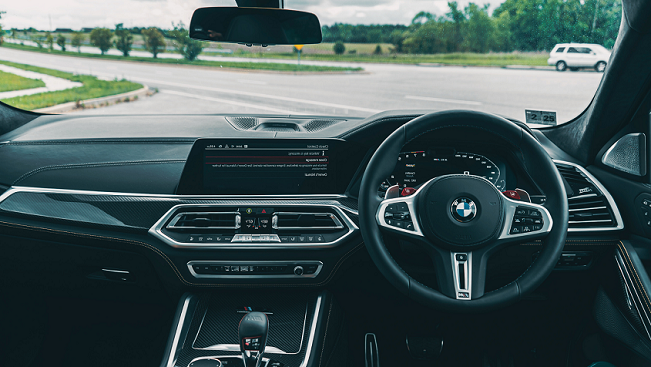
The advent of autonomous driving technology is expected to significantly alter urban infrastructure. As self-driving cars become more common, cities must change their infrastructure to accommodate this new technology. This article discusses the intricate relationship between autonomous driving and urban infrastructure and highlights the advantages, disadvantages, and future of this technological revolution.
The Rise of Autonomous Driving
With the development of artificial intelligence (AI), machine learning, and sensor technology, autonomous driving technology may revolutionize transportation. Without human intervention, self-driving cars use cameras, radar, lidar, and complex algorithms to identify their surroundings and make quick decisions.
Benefits of Autonomous Driving
Enhanced Safety
Improving road safety is the biggest advantage of autonomous driving. Self-driving cars can reduce the risk of traffic accidents by obeying traffic rules, maintaining a safe distance, and reacting to hazards faster.
Increased Efficiency
Autonomous vehicles can optimize traffic flow and reduce congestion by communicating with traffic management systems and each other. This allows for more efficient use of road space, reducing travel time and lowering fuel consumption.
Environmental Benefits
Autonomous driving reduces greenhouse gas emissions because it increases efficiency. By optimizing charging schedules and routes, autonomous vehicles can reduce their negative impact on the environment.
Improved Accessibility
Self-driving cars may help people who cannot drive, such as the elderly and disabled, get around. Their quality of life can improve because they are closer to each other, which increases social inclusion.
Impact on Urban Infrastructure
Widespread use of autonomous driving will require major adjustments to urban infrastructure. Cities must adapt to autonomous vehicles and make the most of them.
Smart Traffic Management
The combination of smart traffic management systems and autonomous vehicles helps reduce congestion and optimize traffic flow. These systems use real-time data from autonomous vehicles and connected infrastructure such as traffic signs and road sensors to manage traffic in real time.
Redesigning Roads and Intersections
City planners must redesign roads and intersections to accommodate autonomous vehicles. This could include creating dedicated lanes for self-driving cars, using smart markers, and improving road markings to improve machine readability.
Parking Solutions
Self-driving cars may reduce the need for traditional parking spaces because they can drop passengers off and park in uncrowded areas. Through this change, valuable urban space can be used for other purposes, such as green spaces or pedestrian areas.
Infrastructure for Electric Vehicles
With the rise of autonomous driving and electric vehicles, cities need to provide charging facilities to meet the increasing number of electric vehicles. To effectively manage energy demand, smart grids need to be developed and fast chargers installed at strategic locations.
Data and Communication Networks
Autonomous vehicles require powerful data and communications networks. Cities need to invest in high-speed, low-latency communications infrastructure, such as 5G networks, to enable instant data exchange between vehicles and infrastructure.
Challenges and Considerations
While autonomous driving offers tremendous benefits, there are challenges that cities must address to ensure a smooth transition.
Regulatory Frameworks
Safe and efficient deployment of autonomous vehicles requires a comprehensive governance framework. To address liability and insurance issues, governments must develop clear testing, certification, and enforcement standards.
Cybersecurity
The increased connectivity of autonomous vehicles makes them more vulnerable to cyberattacks. Protecting vehicles and the infrastructure they rely on is critical, so effective cybersecurity measures are a must.
Public Acceptance
Successful adoption of autonomous driving requires public buy-in. Communities and cities need to work together to address concerns and misconceptions about autonomous vehicles.
Investment and Funding
Changing urban infrastructure to accommodate self-driving cars will require significant funding. To fund these transformations, cities must consider a variety of financing options, including public and private sector partnerships.
Future Prospects
The future of autonomous driving and urban infrastructure seems promising, and some new technologies and innovations will change this trend.
Integration with Public Transportation
Self-driving cars can complement public transportation systems and reduce the distance between public transportation hubs and final destinations. This integration can improve the overall efficiency of urban transportation.
Platooning
Platooning is when autonomous vehicles drive in a convoy to reduce air resistance and improve fuel efficiency. This idea is particularly advantageous in terms of logistics, cost reduction, and environmental impact.
Mixed Traffic Environments
It will take some time to achieve full autonomy, in which autonomous vehicles will share the road with human-driven vehicles. Cities must develop plans to safely and effectively manage mixed environments.
AI and Big Data Analytics
The use of big data analytics and artificial intelligence will help improve urban autonomous driving infrastructure. By analyzing vast amounts of data from vehicles and infrastructure, cities can make informed decisions to improve traffic management, safety, and sustainability.
Conclusion
The combination of autonomous driving and urban infrastructure represents a shift in the way urban traffic is managed. By using autonomous driving technology, cities can improve road safety, improve efficiency, reduce negative environmental impacts, and increase accessibility. However, realizing this vision requires careful planning, investment, and cooperation from every stakeholder.
Cities must change their infrastructure to accommodate the continued development of autonomous driving technology. Smart traffic management, redesigning roads, and investing in data and communications networks are ways urban areas can unlock the potential of autonomous vehicles. In the future, urban transportation will be more interconnected, efficient, and sustainable, paving the way for smarter and more livable cities.


